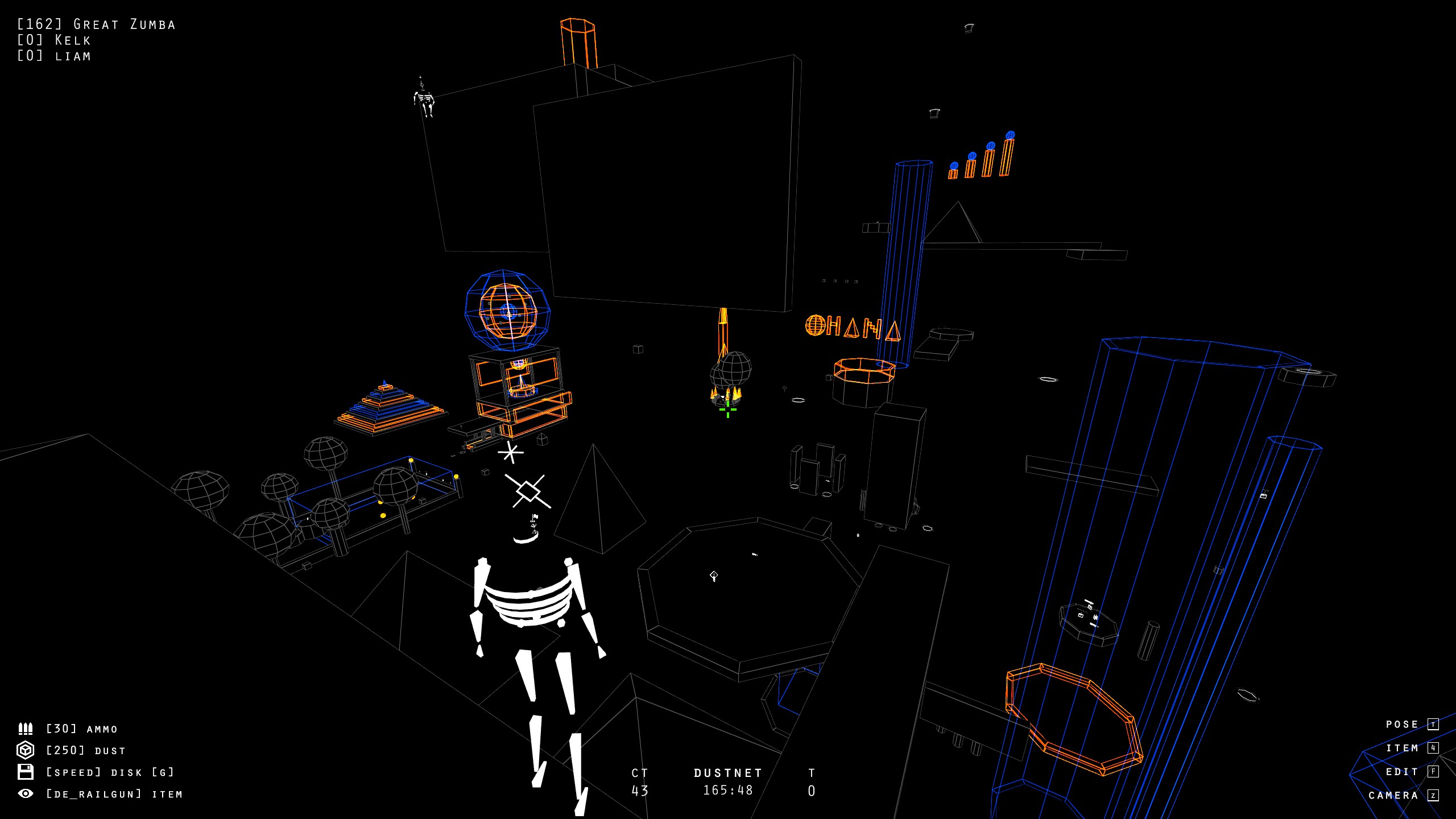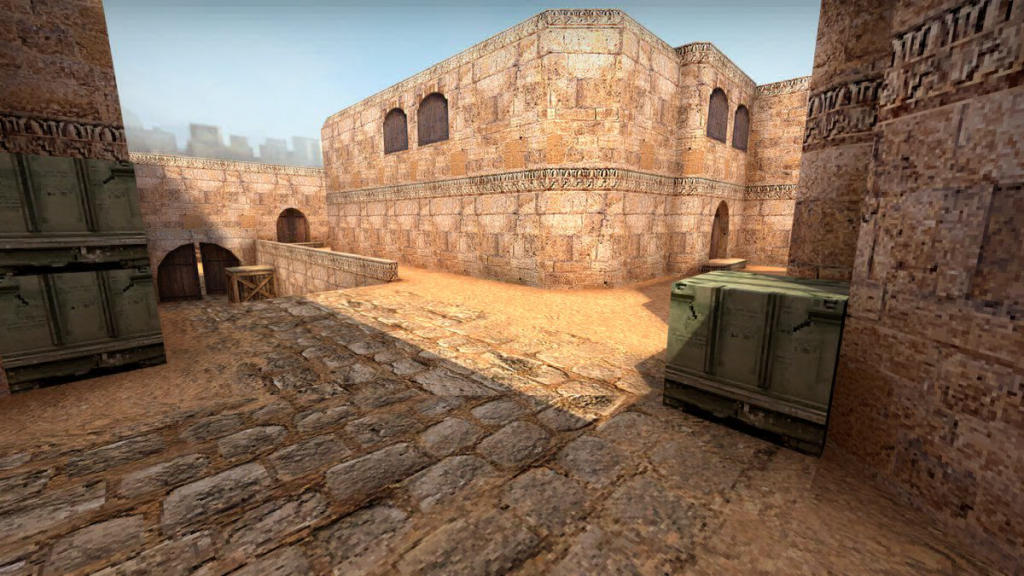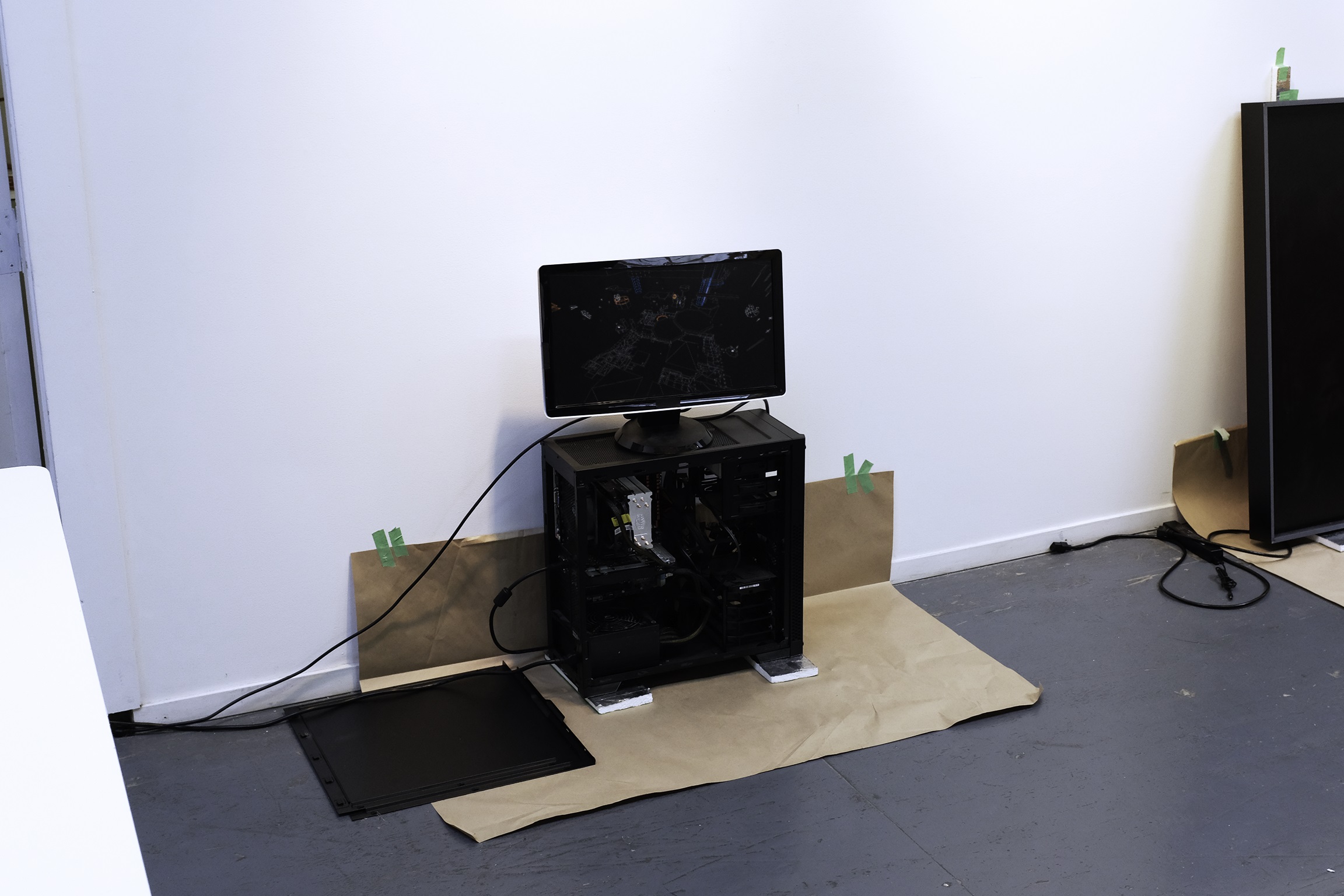Save Counter-Strike from disappearing forever in this surreal multiplayer game
Set inside the last de_dust2 server on Earth, Dustnet explores what it means for multiplayer games to die.

What year will the last Dust2 server go offline? Who will be the last human being to rush B?
Dustnet is a multiplayer game that ponders the demise of seemingly immortal games like Counter-Strike. Set inside the last running instance of its most popular map, de_dust2, the experimental project is a 16-player sandbox that explores the impermanence of multiplayer servers and the communities it takes to sustain them.
In a time when even recently-released games like P.T., and SOS can disappear suddenly and forever as a result of studio closures, licensing expiry, or other issues, and a time when fan creations and pirate servers spring up to memorialize them, the ideas explored in Dustnet feel essential.

"I wanted to imagine the death of a well known and loved space," one of Dustnet's creators, SCRNPRNT's Neilson Koerner-Safrata, tells me. "There hasn’t been a more resilient virtual space than the Counter-Strike map de_dust2, in the span of 20 years it has transformed from online battleground to tourist destination to sports coliseum... the dust2 you know from your childhood is already dead."
If any of Dustnet's regional servers ever lie vacant, the player creations and modifications made on them are erased.
Despite that premise, Dustnet isn't an attempt to replicate Counter-Strike's competitive gameplay. You spawn with a rifle in your hands, and can bunnyhop your way through a convincing wireframe copy of Dust2's layout, but entering Dustnet is much more like visiting an ancient, abandoned Garry's Mod or Minecraft server than it is playing Counter-Strike. Koerner-Safrata says the early focus of the project was "put towards trying to capture the emotions one feels specifically not from playing CS or Dust2 but from playing in the Source Engine."

Many of Dustnet's systems and mechanics focus on map editing. The first thing you see when you spawn are player-created structures—towering pillars, pyramids, platforms, geometric words floating in space—all punctuating an endless black void. At any point you can tap F to enter a freeform editing mode, floating across the map to build (or delete) new bits of geometry or place objects like teleport nodes, jump pads, power ups, or ammo pickups.
There are also giant, godlike hands floating in the sky above you.
Keep up to date with the most important stories and the best deals, as picked by the PC Gamer team.
These are VR players, who play Dustnet through a different perspective, and with different powers. Their giant, disembodied palms can blast you to death with lasers, they can build on a bigger scale, and they can bring water (blue wireframe boxes) and instakilling orange fire (orange wireframes) into the world.
VIDEO: Interacting with one of Dustnet's god-hands.
When my tiny, skeleton avatar finally caught the attention of one of Dustnet's VR demigods, they lowered their palm to ground level, prompting me to step in. The hand elevatored me toward a platform, but three or four times I slipped between its fingers, falling back to the surface. Eventually the VR player tried a new technique, flipping their hand over, turning it convex, and brought me up on the dorsal side. I imagined someone in Canada or Brazil standing in their living room with a VR headset, mirroring these gestures, trying to lift an invisible me off their carpet. Being cupped in the gentle hands of an anonymous deity in this purgatory atmosphere was strangely comforting.
There's also a free AR version of the game, which allows you a live window into the server through your tablet or phone. I imprinted Dustnet onto my coffee table and let it sit there for a few hours like a monochrome Counter-Strike ant farm.

How do you keep Counter-Strike from dying?
Dustnet doesn't offer much instruction. There are secrets scattered inside it, like a buried memorial message to de_dust2 creator Dave Johnston. I found a series of signs staggered up the tallest structure on the map, which collectively described the genesis of Dustnet. One of them read: "A decade ago, we were a land of infinite bloodshed. The bomb was seen as the end of all life, but was in fact the catalyst of rebirth. Our big bang, so to speak."
One of the implicit ideas in Dustnet is that activity of any kind—fragging, acrobatic bunnyhopping, or crude wireframe architecture—brings life to a digital space. "Gotta make your own reasons to be on the server," a player named Malone wrote in global chat during my session today.
If any of Dustnet's regional servers ever lie vacant, the player creations and modifications made on them are erased. In the same fashion as Counter-Strike 1.6 servers, an admin message, superimposed on the map, precedes play:
"PLEASE BE RESPECTFUL. THIS IS THE LAST COPY OF DE_DUST2 WE HAVE. WE ENCOURAGE YOU TO BUILD AND ADD TO THE MAP BUT ANY CHANGES WILL BE LOST IF THE SERVER BECOMES EMPTY."

Servers can also go into a "low-energy state, where everything becomes dull and muted." This decay can be kept at bay by players joining, looting dead players' bodies, planting the bomb, and generally keeping the realm alive with their activity.
Dustnet's creators themselves are engaged in this act of preservation in how they're handling the server itself, which runs on a physical PC. "The server computer I am running it on will be preserved in order to run the software 50 years from now, one day it might be a real archive for Dust2 where players can log in and explore for a bit," Koerner-Safrata says. "Dustnet is part memorial and part archive, it’s anticipating dust2’s death, one day we won’t play on it anymore. Maybe SCRNPRNT’s next game will feature Summoner’s Rift so we can kill that too."
How does one preserve a game like League of Legends? Along with most of the other most popular games in the world, LoL only available digitally and relies on matchmaking rather than fixed servers. Dustnet is a reminder of how powerless we increasingly are when it comes to preserving the virtual spaces we love. It's that same lack of control that allows some publishers to resell the same games back to us in a remastered form.
Fortnite is an even bigger example: an ever-evolving space that's fundamentally about player creation, but whose map is overwritten and made inaccessible with each transformation. Talking about the relationship between VR, AR, and PR players inside Dustnet, Koerner-Safrata off-handedly mentions that he believes worlds like Fortnite will become so persistent that their daily, in-game events will be tied to our daily lives, and that "your birthday party will be exclusively in Fortnite, so will your funeral," he says.
When I die, don't bury me in Fortnite.

Evan's a hardcore FPS enthusiast who joined PC Gamer in 2008. After an era spent publishing reviews, news, and cover features, he now oversees editorial operations for PC Gamer worldwide, including setting policy, training, and editing stories written by the wider team. His most-played FPSes are CS:GO, Team Fortress 2, Team Fortress Classic, Rainbow Six Siege, and Arma 2. His first multiplayer FPS was Quake 2, played on serial LAN in his uncle's basement, the ideal conditions for instilling a lifelong fondness for fragging. Evan also leads production of the PC Gaming Show, the annual E3 showcase event dedicated to PC gaming.

